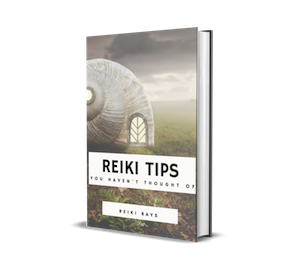There are a lot of speculations and scepticism around Reiki and other healing sciences. According to the scientific consensus, Reiki is called pseudoscience. This is mainly because science does not approve of the phenomenon that is not measurable and does not have biological plausibility. However, it is worth noticing that epidemiologist, Austin Hill who proposed the causal association of ‘biological plausibility,’ himself de-emphasized it by saying that many discoveries happened when there was no biological knowledge to support the evidence. A prominent inventor, Nikola Tesla vouches by saying “The day science begins to study non-physical phenomena, it will make more progress in one decade than in all the previous centuries of its existence.”
Inspite of the many inadequacies of science, it has come a long way by examining matter and energy at its most fundamental level in terms of quantum physics and its principles. Nevertheless, with quantum physics, science has reached a deadlock which relies on theoretical physics and employs all kinds of mathematical acrobatics to mystify our understanding of the cosmos.
Regardless of what science has to say or prove, many people are put off by the idea of Reiki. On the contrary, there are others who experience the positive effects of Reiki but do not want to get attuned and even if they get attuned, they discontinue healing altogether at some point of time.

Why can some people not connect or identify with Reiki while others swear on it and cannot live without it? Well, here are some common reasons that make Reiki uninteresting and disagreeable for some.
- Reiki is Spooky: This is the commonest reason why people would not want to talk about, let alone experience this soothing energy. They are not to be blamed though! Even the bravest scientists have been freaked out by the quantum entanglement phenomenon which Albert Einstein had described as “spooky action at a distance”. Most logical brains cannot process the intangible aspects of energy healing and find it eerie and supernatural. It takes a lionhearted warrior to undertake and set out on the healing adventure.
- 21 Days Self-healing: Healing is interesting as long as it’s done on someone else. The second catch in someone’s healing journey is the 21 days self-healing process. I have seen most of my students lose interest in Reiki when it comes to healing themselves during the first 21 days after attunement. However, healing during the first 21 days makes one more receptive to energy and forms a significant predecessor in our self-discovery.
- Purging effect: Cleansing effects while we take up energy healing for the first time is typical. Some individuals show greater effect than others while few have none. It is just the unwanted energetic debris stored in our system that gets ejected from the body in various ways viz. diarrhoea, vomiting, frequent urination, fever, aches and pains etc. This is a natural process though; for positive energy to enter the body, first the old accumulated and negative energy needs to be expelled.
- Not Ready for Change: There are many healers who after attunement want their family and friends to also get attuned to Reiki for the many benefits that it provides. Although, their intention is to bring about the same positive changes among their kith and kin that they experienced after Reiki, they do not realize the fact that not everyone is ready to take up the changes that come when one gets attuned to Reiki. They may not be willing or prepared yet to rise above the current situation.
- Karmic Debts: When we arrive on Earth, we bring along with us the seeds of our past actions for fruition in this life. Many are caught up in karmic cycles which are outside their current purview. There may be unlearned or incomplete lessons that need to be sorted before one is open to the new life that Reiki would be a harbinger of.
- Not Open to Co-create: It is scientifically proven that people who use the left side of the brain think in a linear, structured, logical and analytical way. Whereas individuals who use the right side of the brain are more creative, intuitive and holistic thinkers. To become receptive to Reiki, one needs to shut down the cognitive side of the brain and open up channels for co-creation and manifestation.
- No Time to Practice: This is another common complaint I keep hearing from my students. However, it’s a matter of making a choice of living a balanced life over a deranged and wobbly one. Most practitioners turn to Reiki when the need arises; when they come to a point in life where there is no other option left than adopting an integrated and more holistic approach.
- Taking Efforts: Most people believe that Reiki is all about taking action. However, the true essence of Reiki lies in BEING and not DOING. Reiki is all about going with the flow just like the way nature functions with ease and grace. It is as simple as placing your hands on your tummy while you watch your favourite TV soap and just allow Reiki to do its work.
- Meditation is not for Everyone: A lot of people benefit from sitting still and experiencing the present moment. However, there are others who feel perturbed at the very thought of sitting idle. Meditation can be contraindicated in mental disturbances like psychosis or personality disorders without medical supervision. It has been observed that meditation can trigger negative experiences not only in people with mental issues but also in people with no history of mental illness. This is where the conundrum lies; it’s pertinent to note that Reiki and meditation are not the same. The former is an energy modulation technique which works on all levels (physical, mental, spiritual) whereas the latter is a way of training the mind to attain mental stability. Using meditation without medical consultation in mentally ill individuals is like trying to tame a wild elephant without a mahout.
- Observing No Physical Manifestation of Reiki: Right from attunement to later while healing, I have seen many people look for evidence that Reiki is working. While it’s true that when Reiki flows, the healer and healee may both experience some physical sensations like heat, cold, warmth, tingling, hot flashes, chills, goosebumps, throbbing etc., it is not necessary that one experiences a sensation always! Reiki works in subtle ways and a tactile impression may not be imperative every time.
Article by Reiki Master Supriya Nair
Free eBook download: We’ve created an eBook with our best articles on this topic, and offer it for free to all our newsletter subscribers.


Supriya Nair
Dr. Supriya Nair, IMD, PhD has been a Reiki and Kriya Yoga practitioner since 2008. A conduit between the scientific and spiritual worlds, Dr. Supriya has a profound fascination for the healing arts. Apart from holding the title of Usui Reiki Master Teacher, Dr. Supriya is a certified Health Coach and proficient in various integrative medicine modalities. She is also the author of "Train Your Brain to Unchain Your Pain."
To get in touch with Dr. Supriya, you can reach out via email at [email protected] or connect with her on Facebook at facebook.com/supriyanair111 and on Instagram at instagram.com/proconscious.cafe.



![[Infographic] Violet Flame in Reiki Healing](https://reikirays.com/wp-content/uploads/2015/01/Violet-Flame-1-150x150.png)
Leave a Reply